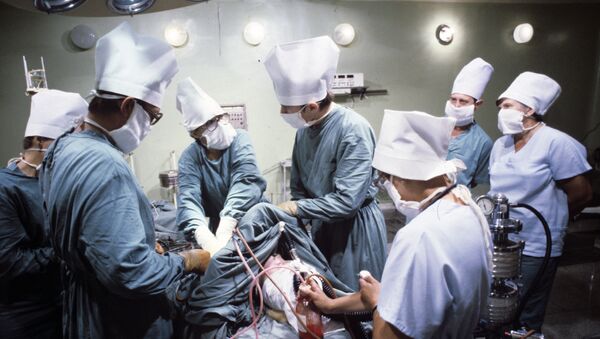MOSCOW, October 24 (RIA Novosti) - In Australia, surgeons have successfully transplanted a ‘dead’ heart that had stopped beating beforehand, which will help relieve the shortage of donor organs worldwide.
Three donor hearts were donated after their circulatory deaths, which means they were not beating, and in two cases the patients were convalescing, Prof. Peter MacDonald, the director of St Vincent’s Hospital Heart Lung Transplant Unit in Sydney said, as quoted by the Australian. The most recent dead heart recipient still requires thorough care. Surgeons used an innovative technique in making the hearts usable for transplantation. The heart was dead for 20 minutes before it was reanimated with a recently developed preservation liquid and then transplanted into a patient.
"They are the only three in the world", Prof. Kumud Dhital of the University of New South Wales in Sydney, said as quoted by AFP. "We know that within a certain period of time the heart, like other organs, can be reanimated, restarted, and only now have we been able to do it in a fashion whereby a heart that has stopped somewhere can be retrieved by the transplant team, put on the machine... and then [surgeons can] transplant it."
Hitherto, surgeons used donor hearts from brain-dead victims. Such practice severely limited the amount of available donor organs. The new technique of resuscitating dead hearts was developed by Victor Chang Cardiac Research Institute and Sydney's St Vincent's Hospital. The physicians say it will afford more donor organs for transplantations, which will save roughly 30 percent more lives, as reported by ABC. The stopped heart can also be easily transported in a portable transplantation unit called “heart in a box” where it is kick-started again.
Prof. MacDonald noted that historically dead hearts have already been transplanted on a few occasions in the 1960s, when spare-parts surgery was introduced, having saved three children ever since. "There have been no adult heart transplants from so-called DCD (Donated after Circulatory Death) donors since the very first ones done in the 1960s", he told AFP. The main achievement of the Australian medics is finding a way to reanimate a dead heart and transport it safely. “What we have done is developed a technique which enables us to firstly resuscitate hearts from a DCD donor and then have a capacity to transport that heart from the donor hospital wherever that donor hospital is ... to St Vincent's to enable it to be transplanted,” Prof. MacDonald elaborated.
The first patient to receive a dead heart revived using the new technology is 57-year-old Michelle Gribilar. She had congenital heart failure and underwent transplantation two months ago. “I was very sick before I had it,” she said, as quoted by the Australian. “Now I’m a different person altogether.”
The other convalescing recipient is Jan Damen, 43, who had to have a heart transplant because of the same disease as Ms.Gribilar. His surgery happened two weeks ago and he is still at the hospital. “I’m just looking forward to getting back out into the real world,” he told the Australian.
It is still disputed how long after death a heart can be revived using the new technique, yet the recent transplants show that more than 30 minutes is viable.


